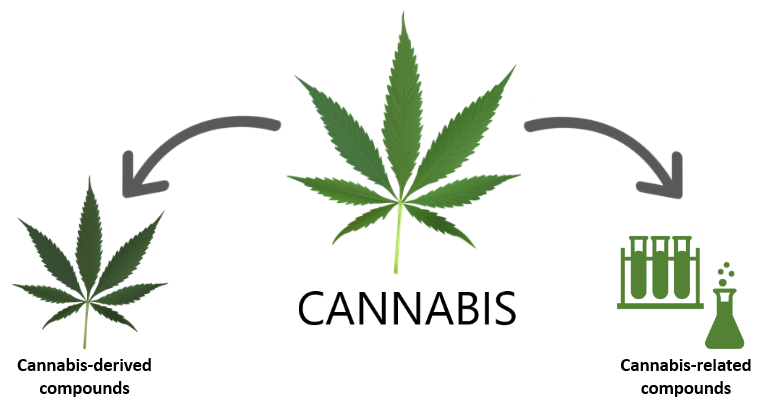Cannabis has long been recognized for its medicinal properties, and one of its most well-documented uses is in pain management. This comprehensive guide delves into how cannabis helps alleviate pain, the science behind its effectiveness, different types of pain it can treat, and how to use it safely and effectively.
Understanding Cannabis and Pain Relief
Cannabis contains over 100 chemical compounds known as cannabinoids. The two most well-known cannabinoids are tetrahydrocannabinol (THC) and cannabidiol (CBD). These compounds interact with the body’s endocannabinoid system (ECS), which plays a crucial role in regulating various physiological processes, including pain perception.

The Endocannabinoid System (ECS)
The ECS comprises receptors (CB1 and CB2), endocannabinoids (natural cannabinoids produced by the body), and enzymes that break down these cannabinoids. CB1 receptors are primarily found in the brain and central nervous system, while CB2 receptors are more abundant in the immune system and peripheral tissues. When cannabinoids from cannabis bind to these receptors, they can modulate pain signals and provide relief.
Types of Pain Cannabis Can Treat
Cannabis has been shown to be effective in managing various types of pain, including:
- Chronic Pain: Persistent pain that lasts for months or years, often resistant to conventional treatments. Conditions like arthritis, fibromyalgia, and neuropathy fall into this category.
- Neuropathic Pain: Caused by nerve damage, this type of pain is often described as burning, tingling, or shooting pain. It’s common in conditions like multiple sclerosis and diabetes.
- Inflammatory Pain: Resulting from inflammation, this type of pain is common in autoimmune diseases like rheumatoid arthritis and inflammatory bowel disease (IBD).
- Acute Pain: Short-term pain resulting from injuries, surgeries, or medical procedures. Cannabis can help manage post-surgical pain and pain from injuries.
How Cannabis Alleviates Pain
- THC and Pain Relief: THC binds to CB1 receptors in the brain and spinal cord, altering pain perception and providing relief. It also has anti-inflammatory properties that help reduce pain caused by inflammation.
- CBD and Pain Relief: CBD interacts with CB2 receptors and influences non-cannabinoid receptors, such as serotonin and vanilloid receptors, which are involved in pain modulation. CBD is known for its anti-inflammatory and analgesic properties.
- Entourage Effect: When THC and CBD are used together, they can enhance each other’s effects. This synergy, known as the entourage effect, can provide more comprehensive pain relief.
Methods of Using Cannabis for Pain Management
There are various ways to consume cannabis for pain relief, each with its own onset time and duration of effects:
- Inhalation:
- Smoking: Provides quick relief as cannabinoids are absorbed through the lungs into the bloodstream. However, smoking can have negative effects on lung health.
- Vaporizing: A safer alternative to smoking, vaporizing heats cannabis to release cannabinoids without combustion, reducing harmful by-products.
- Oral Consumption:
- Edibles: Infused foods and drinks provide long-lasting relief but take longer to take effect (30 minutes to 2 hours) as they are metabolized in the digestive system.
- Tinctures: Liquid extracts taken sublingually (under the tongue) offer faster onset than edibles and are easy to dose.
- Topicals: Creams, balms, and patches applied directly to the skin can provide localized pain relief without psychoactive effects.
- Capsules and Pills: Offer precise dosing and are convenient for those who prefer not to inhale or taste cannabis.
Choosing the Right Strain for Pain Management
Different cannabis strains have varying levels of cannabinoids and terpenes, affecting their pain-relieving properties:
- Indica Strains: Known for their relaxing and sedative effects, Indica strains are often recommended for nighttime use and managing chronic and inflammatory pain.
- Sativa Strains: Energizing and uplifting, Sativa strains can help with daytime pain relief without causing drowsiness.
- Hybrid Strains: Combining Indica and Sativa genetics, hybrids offer balanced effects and can be tailored to specific pain management needs.
Safety and Considerations
While cannabis can be an effective pain management tool, it’s important to use it responsibly:
- Dosage: Start with a low dose and gradually increase until you find the effective dose with minimal side effects.
- Consultation: Always consult with a healthcare provider, especially if you’re taking other medications, to avoid potential interactions.
- Legal Considerations: Be aware of the legal status of cannabis in your area and obtain it from reputable sources.
Scientific Evidence Supporting Cannabis for Pain Management
Numerous studies support the efficacy of cannabis in pain management:
- Chronic Pain: A 2017 review by the National Academies of Sciences, Engineering, and Medicine concluded that there is substantial evidence that cannabis is effective in treating chronic pain in adults.
- Neuropathic Pain: A study published in the Journal of Pain in 2015 found that inhaled cannabis provided significant pain relief for patients with neuropathic pain.
- Inflammatory Pain: Research in the European Journal of Pain in 2016 showed that topical CBD application reduced pain and inflammation in animal models of arthritis.
Conclusion
Cannabis offers a promising alternative for pain management, with the ability to address various types of pain through its interaction with the endocannabinoid system. By understanding the different cannabinoids, strains, and methods of consumption, you can tailor your cannabis use to effectively manage pain. Always consult with a healthcare provider to ensure safe and effective use.
At BabaGanja.com, we’re committed to providing you with the latest information and resources on cannabis. Explore our site for more guides, strain reviews, and tips to enhance your cannabis experience.




1 thought on “How Cannabis Helps in Pain Management: A Comprehensive Guide”